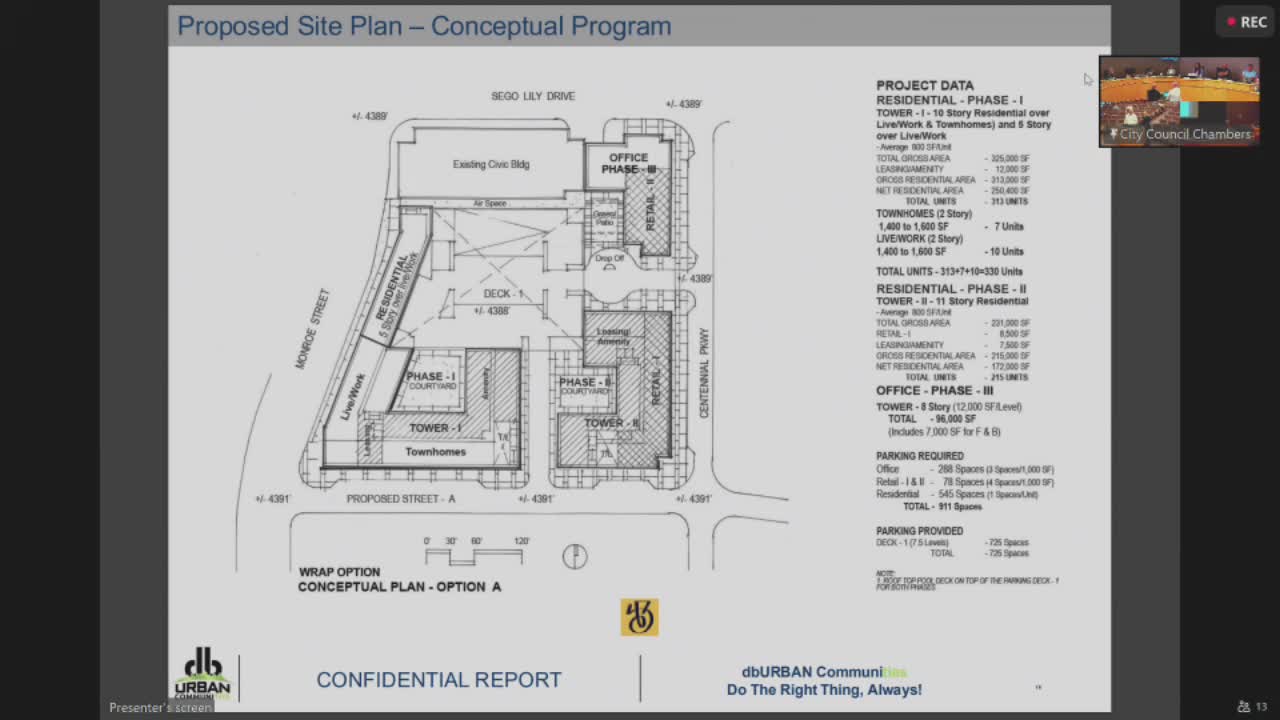Council Discusses New Development Agreement for Urban Growth Amid Financing Concerns
July 29, 2025 | Sandy, Salt Lake County, Utah
This article was created by AI summarizing key points discussed. AI makes mistakes, so for full details and context, please refer to the video of the full meeting. Please report any errors so we can fix them. Report an error »

In a recent Sandy City Council meeting, discussions centered around the development agreement (DA) for a significant project that aims to reshape the local urban landscape. The council is grappling with the complexities of ensuring that developers meet their obligations while avoiding pitfalls experienced in previous projects.
Key to the conversation was the need for a robust development agreement that outlines specific obligations and timelines for the developers. Council members expressed concerns about how to prevent future defaults, which have previously left the city in challenging situations. The discussions highlighted the importance of establishing penalties for non-compliance, including potential liquidated damages and the option for the city to step in and find alternative developers if necessary.
Council member Robinson emphasized the need for clarity on how to avoid repeating past mistakes, asking for deeper insights into the financing and execution of the project. The developers responded by outlining their phased approach, which is designed to ensure that financing aligns with the project's progress. They noted that the current landowner is in default, complicating the legal framework for moving forward. A new development agreement is essential to address these issues and to provide a clear path for the project.
The developers also discussed the evolving nature of urban development in Sandy, pointing to successful models in nearby areas. They highlighted the shift towards mid-rise buildings, which have become increasingly viable in suburban settings. This evolution is seen as a response to population growth and changing housing demands, with a focus on creating vibrant urban centers that integrate residential, retail, and entertainment spaces.
As the council continues to navigate these discussions, the outcome of the development agreement will be crucial for shaping Sandy's future. The city aims to foster a thriving urban environment while ensuring that developers are held accountable for their commitments. The next steps will involve finalizing the agreement and addressing any remaining concerns to facilitate a successful project that benefits the community.
Key to the conversation was the need for a robust development agreement that outlines specific obligations and timelines for the developers. Council members expressed concerns about how to prevent future defaults, which have previously left the city in challenging situations. The discussions highlighted the importance of establishing penalties for non-compliance, including potential liquidated damages and the option for the city to step in and find alternative developers if necessary.
Council member Robinson emphasized the need for clarity on how to avoid repeating past mistakes, asking for deeper insights into the financing and execution of the project. The developers responded by outlining their phased approach, which is designed to ensure that financing aligns with the project's progress. They noted that the current landowner is in default, complicating the legal framework for moving forward. A new development agreement is essential to address these issues and to provide a clear path for the project.
The developers also discussed the evolving nature of urban development in Sandy, pointing to successful models in nearby areas. They highlighted the shift towards mid-rise buildings, which have become increasingly viable in suburban settings. This evolution is seen as a response to population growth and changing housing demands, with a focus on creating vibrant urban centers that integrate residential, retail, and entertainment spaces.
As the council continues to navigate these discussions, the outcome of the development agreement will be crucial for shaping Sandy's future. The city aims to foster a thriving urban environment while ensuring that developers are held accountable for their commitments. The next steps will involve finalizing the agreement and addressing any remaining concerns to facilitate a successful project that benefits the community.
View full meeting
This article is based on a recent meeting—watch the full video and explore the complete transcript for deeper insights into the discussion.
View full meeting

